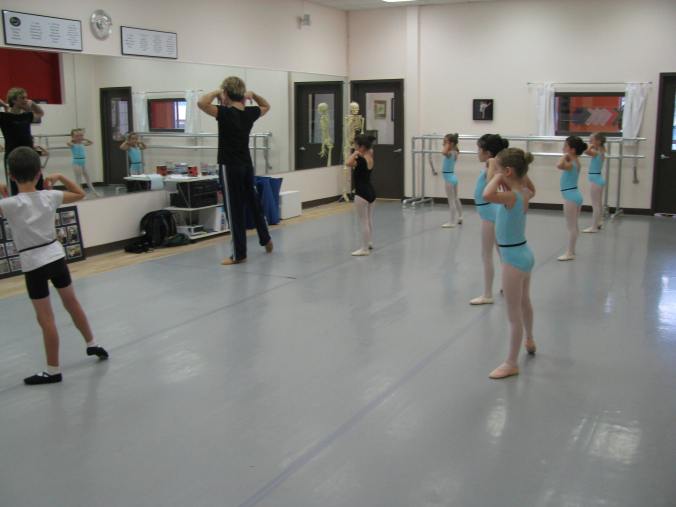Disclaimer: this is a post about ballet school. It is also the start of a conversation. Even if you know nothing of ballet or ballet school, this might resonate with you if you have ever had the joy and the challenge of parenting a young child. Read on.
Last week a local magazine whose demographic is young families published an article I wrote about ballet school; you can go here to see it archived online. It is a thumbnail sketch of how to choose a ballet school for your young child, particularly if you are uninitiated in the ways of the squirrely ballet world. The article I wrote initially was many times longer, scaled down to fit the parameters of this particular publication. After I mentioned I had written it and posted a photo of the top of the article via social media, several people asked right away to see it; the magazine consortium’s editors were kind enough to make it available electronically. My conclusion is that schools and parents of aspiring young dancers are hungry for this kind of insider perspective. It has nothing to do with this particular piece of writing and everything to do with a big problem in the ballet world, and the bigger dance world, and even in other disciplines that have nothing to do with dance. And that is the absence of a primer, of solid, useful help for parents, their children, and their teachers.
My former roomie from long-ago ballet school days (who is one of the most thoughtful and intellectual people I know) posted a link to this brief blog post as a comment in the thread. In it the father of young daughters opines (justifiably) about some of the worst warts in so-called “competition” schools, which are not the same as ballet schools (but there can most certainly be overlap–in the school’s practices and its culture). The problems are neither unusual nor surprising. He poses two basic questions: first, who would do this to children? And second, why would a parent allow their child to be part of this? (I am synthesizing several questions, to be fair to this dad).
My answers are simple. First, plenty of people would do this to children. And second (perhaps more significantly), a parent would allow their child to be part of it because they do not know any better.
You would be correct in thinking I might have distilled this down a bit too far, particularly on the second point above. Which is precisely why I have a pressing desire to unpack this more completely, especially now that I have taken a step outside the classroom. I have much to say about the subject of dance schools in America, and schools which purvey classical ballet instruction in particular. I write from the perspective of a person who grew up steeped in the form, whose mom danced professionally, and later directed her own schools, and who still teaches. I also write from the perspective of the founding director of a classical ballet school, an instructor with training in classical ballet pedagogy, and more than a decade of experience at the front of the classroom. Not insignificantly, I write from the perspective of a parent.
It is only natural for parents (and their children) to bring with them ideas of what they think ballet means, and what ballet school is, when they start down that road. Some preconceptions are closer to the mark than others. But it is so painful to see misconceptions fed and encouraged in teaching environments, and especially awful when children are hurt by them. It should matter to parents. When I still had my school, my mission was simple: excellent instruction in classical ballet technique. But the philosophy therein included something else important: helping students and their parents become intelligent consumers of classical ballet.
Ignorance is dangerous, said Charles Dickens:
This boy is Ignorance and this girl is Want. Beware them both, and all of their degree, but most of all beware this boy for on his brow I see that written which is Doom, unless the writing be erased.
Okay, that is dramatic language, but it is effective. I will present a few more ideas here in the near future, with a view towards a different platform ultimately. I would love to help erase what is written on that boy’s brow.
In fairness to competition schools, there are very good ones out there, and good competition-style instructors and coaches who would not condone what the dance dad observed in his post. But I sure wish I could have talked to him when he was trying to navigate his way through the morass.
Note: photos used in this post belong to the author. Please don’t steal–it’s not nice. The dance dad would back me up on that.



I notice that the article only refers to girls who want ballet classes…is the advice the same for boys?
Never mind – I see you address that later in the piece, thank you!
No worries; thanks for stopping by. I plan to expand this conversation in the coming weeks and months. To answer your question: yes, the advice is the same for boys, and no it is not. (How’s that for muddying the waters?) Boys bring with them their own special collection of issues, not least of which: developmentally they are two years behind girls. This comes from my mentor at American Ballet Theatre, and beyond that, from the child development experts who were polled to develop one of the best (maybe, arguably, the best) programs for dance pedagogy to date. So much needs to be taken into account where boys are concerned. They deserve their own conversation, in truth. Much more later.~Deb